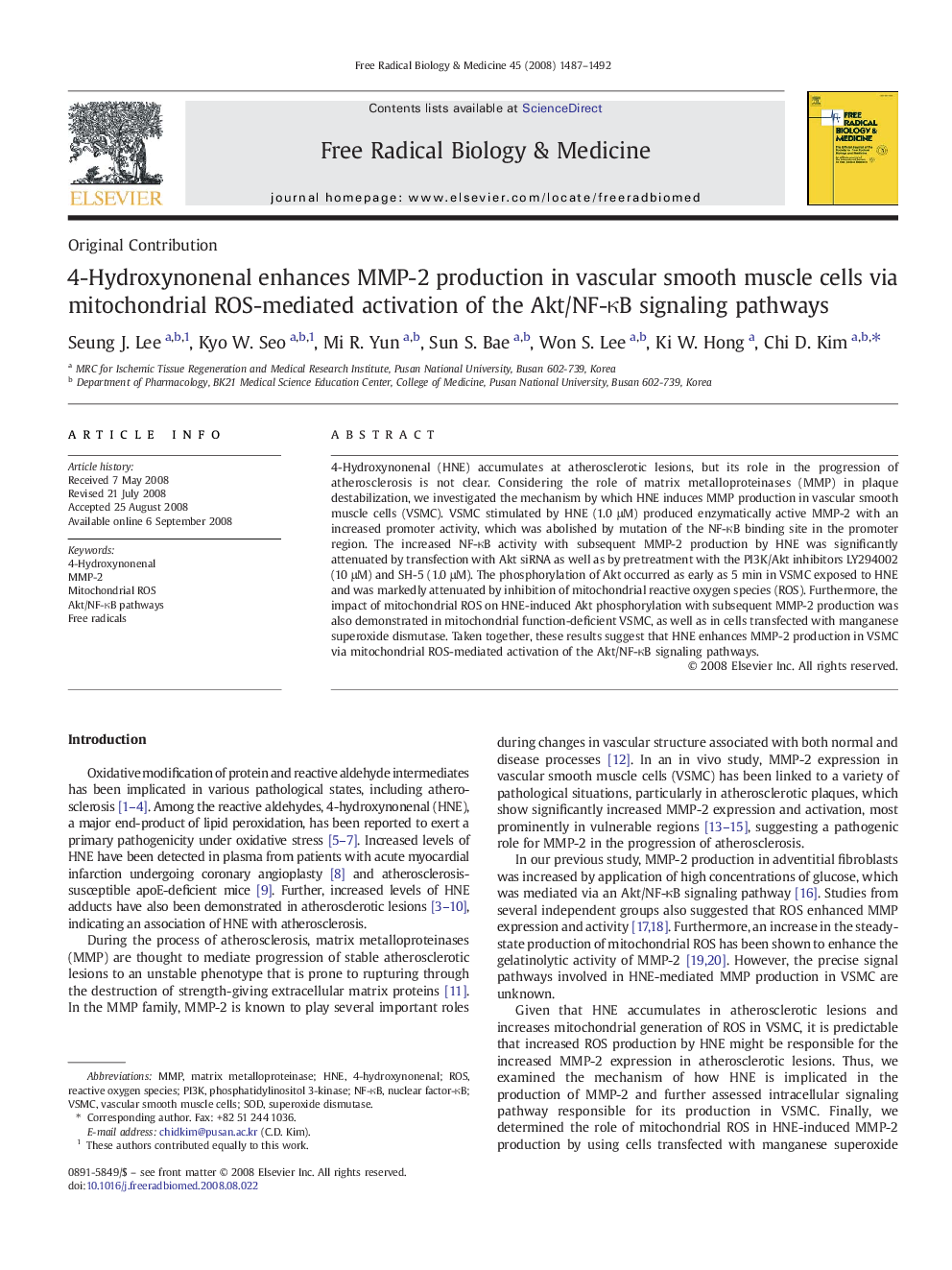| Article ID | Journal | Published Year | Pages | File Type |
|---|---|---|---|---|
| 1910496 | Free Radical Biology and Medicine | 2008 | 6 Pages |
4-Hydroxynonenal (HNE) accumulates at atherosclerotic lesions, but its role in the progression of atherosclerosis is not clear. Considering the role of matrix metalloproteinases (MMP) in plaque destabilization, we investigated the mechanism by which HNE induces MMP production in vascular smooth muscle cells (VSMC). VSMC stimulated by HNE (1.0 μM) produced enzymatically active MMP-2 with an increased promoter activity, which was abolished by mutation of the NF-κB binding site in the promoter region. The increased NF-κB activity with subsequent MMP-2 production by HNE was significantly attenuated by transfection with Akt siRNA as well as by pretreatment with the PI3K/Akt inhibitors LY294002 (10 μM) and SH-5 (1.0 μM). The phosphorylation of Akt occurred as early as 5 min in VSMC exposed to HNE and was markedly attenuated by inhibition of mitochondrial reactive oxygen species (ROS). Furthermore, the impact of mitochondrial ROS on HNE-induced Akt phosphorylation with subsequent MMP-2 production was also demonstrated in mitochondrial function-deficient VSMC, as well as in cells transfected with manganese superoxide dismutase. Taken together, these results suggest that HNE enhances MMP-2 production in VSMC via mitochondrial ROS-mediated activation of the Akt/NF-κB signaling pathways.
